#japanese arabic and mediterranean cultures are considered high
Explore tagged Tumblr posts
Note
I don't know if you can relate but learning Japanese has so far for me been a never-ending conga line of
Me: *translates a sentence in singular I-form, present tense* My answer manual: "Yeah that is actually plural we-form, also past tense. :3" like BRUH😭😂
(The sentence in question (I don't get kanji yet haha) was きょうしつ を そうじして、でんき を けして、それから かえります。-masu!! No -mashita!!!! But what do I know XD)
bruh what, that is the non-past form. 帰る (the last verb) means "to return home". If you write it like that, it implies that it's something you're doing as you speak or that it's a habit. Where did they get the past from???
At least past and non-past (I call it that because it's both present and future lol) have different conjugations, pronouns are a mess. Japanese is a pro-drop, high-context language, meaning that in natural conversations you have to rely on context to have any idea of who's the subject or object 😂
For example:

"何故裏切った" makes perfect sense in Japanese, but it literally means "why betrayed". Who betrayed whom? Well duh, we don't need to specify, it's obvious, read between the lines :) English OTOH likes its pronouns and explicit context very much, so when translating you have to specify and hope that you guessed right:

This was easy. Sometimes it's not. This is how we get amazing mistranslations such as the President in ShTH going from implicitly thanking Shadow to explicitly thanking Gerald, because the Japanese script assumed that one would understand that the subject was Shadow without mentioning him.
... all of this being said, the Japanese used in a manual should be far clearer than this lmao. It's pretty well known that textbook Japanese, for example, relies too much on the pronoun anata because it's the most neutral way to say you, when in spoken Japanese it's considered rude. and i still don't understand how that sentence can be read in the past tense :V
#translating is fun#except when it isn't#i loved studying the differences between high-context cultures and low-context cultures lmao#japanese arabic and mediterranean cultures are considered high#germanic and anglophone cultures are considered low#it's fascinating
8 notes
·
View notes
Text
Jumeirah Al Naseem: A Luxe Oasis in Dubai
Located on the stunning coastline of Dubai, the Jumeirah Al Naseem is a luxurious beachfront property that redefines opulence. As part of the prestigious Jumeirah Group, this hotel combines breathtaking Arabian Gulf views with modern amenities and timeless Arabian elegance. Jumeirah Al Naseem caters to every type of traveler, offering relaxation, fine dining, and a rich cultural experience in one of the world’s most vibrant cities. Whether you’re seeking a family getaway, romantic escape, or business retreat, Jumeirah Al Naseem delivers a stay that blends comfort, adventure, and world-class hospitality.
If you’re considering booking a luxurious stay in Dubai, visit Expedia to explore the best rates and exclusive offers at Jumeirah Al Naseem.
https://expedia.com/affiliate/TgxEs6A
A Prime Location in Dubai’s Jumeirah District
Jumeirah Al Naseem’s location is a highlight in itself. The hotel is part of the wider Madinat Jumeirah complex, a premier destination on Dubai’s coastline that includes other high-end hotels, a souk, and various entertainment options. It’s situated next to the iconic Burj Al Arab, a global symbol of luxury and one of Dubai’s most photographed landmarks. From Jumeirah Al Naseem, guests have direct access to a private beach, perfect for soaking up the Arabian sun and unwinding with scenic ocean views.
The hotel’s central location also makes it easy to explore Dubai’s famed attractions. The Dubai Mall, Mall of the Emirates, and Dubai Marina are all within a short drive. For guests who appreciate cultural immersion, the historic Al Fahidi neighborhood and Dubai Creek offer a glimpse into the city’s past, contrasting beautifully with Dubai’s modern skyline.
Rooms and Suites: A Blend of Modern Elegance and Arabian Charm
The rooms and suites at Jumeirah Al Naseem offer an atmosphere of pure sophistication and relaxation. The design seamlessly integrates contemporary aesthetics with traditional Arabian touches, creating a soothing, luxurious environment.
• Ocean Rooms: These rooms provide spectacular views of the Arabian Gulf and the Burj Al Arab. The large floor-to-ceiling windows flood the room with natural light, and the balconies or terraces create a perfect setting to watch Dubai’s incredible sunsets.
• Suites: The hotel’s suite options range from the Ocean Suites to the Royal Suite, each offering different levels of space, views, and amenities. These suites provide expansive living areas, opulent bathrooms, and VIP amenities such as personalized butler service and private check-in.
All accommodations feature modern conveniences like large flat-screen TVs, spacious bathrooms with rain showers, complimentary high-speed Wi-Fi, and minibar options. Jumeirah Al Naseem is also known for its luxurious beds with high-thread-count linens, ensuring restful nights after days of adventure or relaxation.
Dining at Jumeirah Al Naseem: A Culinary Journey
Jumeirah Al Naseem boasts a collection of world-class restaurants that offer a global dining experience right on the property. Whether you’re a fan of Italian cuisine, Middle Eastern flavors, or fresh seafood, the dining options here will not disappoint.
1. Rockfish: A Mediterranean seafood restaurant with dishes inspired by the freshest ocean catches. Rockfish’s outdoor terrace provides a romantic setting with stunning sea views.
2. Kayto: This unique restaurant offers Nikkei cuisine, a fusion of Japanese and Peruvian flavors. Kayto is known for its signature dishes and elegant ambiance, making it a perfect choice for an intimate dining experience.
3. The Palmery: An all-day dining venue that serves international dishes. The Palmery is ideal for families, offering a relaxed environment with options for every palate.
4. Ambar: For a taste of the Middle East, Ambar provides a rich selection of mezze, grilled dishes, and flavorful cocktails. It’s a favorite for those looking to experience Arabian cuisine and hospitality.
These restaurants, along with the hotel’s in-room dining service, ensure that guests can enjoy a memorable meal regardless of their tastes or dietary preferences. Jumeirah Al Naseem is committed to delivering diverse and refined dining experiences that reflect the hotel’s dedication to excellence.
Activities and Amenities: A Stay Filled with Leisure and Luxury
Jumeirah Al Naseem offers a wide array of activities and amenities to suit every guest. Whether you’re looking for relaxation or excitement, you’ll find something that caters to your interests.
Private Beach and Pools
Guests have access to the hotel’s private beach, which is exclusive to the Madinat Jumeirah complex. The beach features soft sands and clear blue waters, providing a tranquil escape. For those who prefer lounging by the pool, Jumeirah Al Naseem has several options, including family-friendly pools and adults-only spaces, all equipped with comfortable loungers and shaded cabanas.
Talise Spa
The Talise Spa is a sanctuary of wellness that offers a range of rejuvenating treatments. With facilities including private treatment rooms, a traditional Hammam, and plunge pools, the spa provides a haven for relaxation. Talise Spa’s signature treatments, inspired by Arabian wellness traditions, focus on restoring balance and vitality.
Turtle Rehabilitation Sanctuary
One of Jumeirah Al Naseem’s unique attractions is its Turtle Rehabilitation Sanctuary. This initiative, in partnership with Dubai’s Wildlife Protection Office, is aimed at rescuing and rehabilitating injured sea turtles. The sanctuary is open to guests, offering an opportunity to learn about conservation efforts and witness the release of rehabilitated turtles back into the Arabian Gulf.
Souk Madinat Jumeirah
Souk Madinat Jumeirah, a traditional Arabian marketplace, is located within walking distance of the hotel. The souk is designed to resemble an ancient bazaar, with narrow alleyways, boutique stores, and a range of dining options. It’s a perfect spot to pick up unique souvenirs, enjoy local cuisine, or simply soak in the vibrant atmosphere.
Events and Business Facilities
Jumeirah Al Naseem is not only a haven for leisure travelers but also a preferred destination for business events and private gatherings. The hotel offers state-of-the-art conference rooms, meeting spaces, and event planning services, catering to business travelers with sophistication and professionalism. Its idyllic location and luxurious amenities make it an ideal venue for weddings, celebrations, and corporate events, ensuring memorable occasions in a breathtaking setting.
Sustainability and Environmental Initiatives
In addition to luxury and comfort, Jumeirah Al Naseem is committed to sustainability and environmental responsibility. The hotel implements eco-friendly practices across its operations, such as energy-efficient lighting, water-saving technologies, and waste reduction programs. Through its Turtle Rehabilitation Sanctuary and other initiatives, the hotel also engages in wildlife conservation efforts that contribute to Dubai’s commitment to environmental stewardship.
Insider Tips for the Best Experience at Jumeirah Al Naseem
To make the most of your stay at Jumeirah Al Naseem, consider these insider tips:
• Book Early for Premium Views: Ocean Rooms and suites with views of the Burj Al Arab tend to book quickly, so reserve early to secure these coveted spots.
• Explore Souk Madinat Jumeirah in the Evening: The souk takes on a magical quality at night, with ambient lighting and cool evening air enhancing the experience.
• Take Advantage of Resort Facilities: As part of the Madinat Jumeirah complex, guests at Al Naseem can access facilities at the neighboring hotels, including additional dining venues and recreational activities.
• Plan Ahead for Spa Treatments: The Talise Spa is popular among guests, so booking treatments in advance ensures you won’t miss out on this relaxing experience.
Booking Your Stay at Jumeirah Al Naseem
For a truly unforgettable stay in Dubai, Jumeirah Al Naseem offers luxury, comfort, and access to some of the city’s best attractions. With its scenic setting, premium amenities, and exemplary service, this hotel promises an extraordinary experience for every guest.
To secure your reservation and access exclusive offers, visit Expedia. With flexible booking options and insider deals, Expedia makes it easy to plan your luxurious Dubai escape.
Conclusion
Jumeirah Al Naseem stands as a testament to Dubai’s reputation as a world leader in hospitality. Its mix of luxury, cultural immersion, and natural beauty makes it an ideal choice for travelers seeking the ultimate Arabian getaway. Whether you’re enjoying the beach, indulging in fine dining, or unwinding in the spa, a stay at Jumeirah Al Naseem offers memories that will last a lifetime.
https://expedia.com/affiliate/TgxEs6A
1 note
·
View note
Text
best areas to go back and forth in Spain in 2020
Tourism in Spain is, without a doubt, one of the suitable favorite choices in Europe with its company in all places in the world. With the wonderful seashores, mountains, ski resorts, high-quality climate, diverse and interesting nightlife, many cultural areas and historical cities, it is no wonder that Spain is probably the most frequent tourist destination in Europe for any class of shuttle.
if you're also attempting to find tourist places in Spain, then check out a listing by means of break listed under.
Madrid

source: trip consultant
Spain's first-rate capital metropolis showcases the country's staggering history. here's an ideal break vacation spot, as there are a royal palace, parade troopers, alternate guards and lots of museums to consult with.
There is no seek advice from Madrid with out a discuss with to all three foremost museums within the metropolis. The Prado museum reveals what previously the Royal Spanish artwork collection, while subsequent to the Reina Sofia Museum sees an up to date masterpiece just like the Picasso Guernica move. additionally, the local Thyssen-Bornemisza Museum combines historical Masters with the most beneficial contemporary paintings.
probably you might be drawn to THE superior CITIES TO BE AN EXPAT, RANKED
Granada
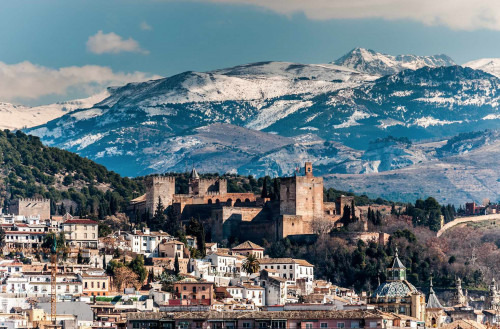
source: Jones world wide
located on the base of the Sierra Nevada mountain range in southern Spain, Granada is the capital of the province of Granada. Granada presents an ideal mix of normal cultures, animated nightlife and fantastic attractions including the realm-renowned Alhambra, the head of Moorish art wrapped in Andalusian history. This medieval complicated overlooking Granada is one in all Europe's splendid architectural attractions, with many guests to Granada to peer the Alhambra. The ultimate Moorish stronghold in Europe, the Alhambra presents appropriate décor, extraordinary and lush gardens, waterfalls and drip water, and excellent views of the metropolis under.
Valencia
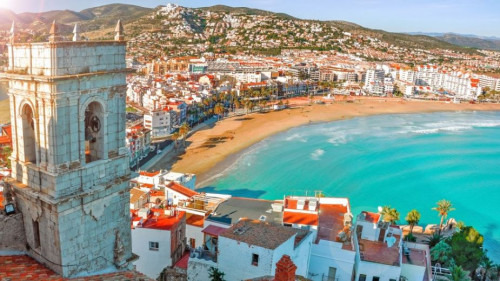
supply: OFO go back and forth
right here, friends will see a lot of orange timber, but the fruit is called "Orange Valencia" is in reality planted in California. tourists who love native food as an alternative may still pay consideration to the paella. besides the fact that children the metropolis has a lot of monuments, Valencia's up to date treasures are the city of Arts and Sciences, a latest advanced of museums, cinemas, theatres, and so forth.
Barcelona
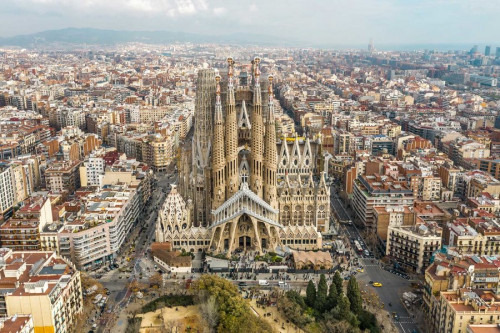
supply: Departures
Barcelona, the city, seaport, and capital of Barcelona Province (province) and of the Catalonia Autónoma Comunidad (self-sufficient group), north-Japanese Spain, lies ninety miles (150 km) south of the French border. it's the greatest of Spain's Mediterranean port and industrial middle and is prominent for its personality, cultural activity, and bodybuilding attractiveness.
The metropolis's core is observed in the Gothic quarter. founded between the Ramblas, a collection of linked boulevards, going southeast to the ocean and by means of Laietana, it's a close maze of narrow paths that are emphasized through amazing medieval structures. The church, Palace and church witness Barcelona's importance as a nonsecular middle.
might be you might be attracted to foremost locations to discuss within Europe in January 2020
Córdoba
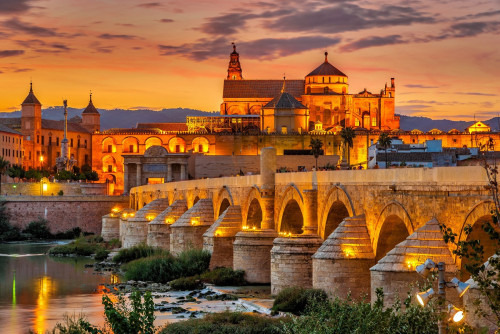
source: Helle Hollis
A building is ample intent to take Córdoba up high on your itinerary: Mezquita. some of the optimum Islamic buildings on this planet, the Mezquita is the symbol of sophisticated lifestyle, secular construction here over a millennium before Córdoba as the capital of Muslim Spain and the largest cultural city of western Europe. but nowadays the Córdoba is greater than Mezquita. With so a great deal to peer and do, some charming lodging, and awesome eating places and bars, it's a lot more priceless than a transient seek advice from that many friends offer. The genuine charm of Córdoba opens as you discover the winding streets of the medieval city in the west, north, and east of the flashy tourist area correct across the Mezquita, wandering between the iron balconies and lights, potted flora, protruding timber.
Watch subsequent: proper 10 Tallest curler Coasters on this planet
The branch of tradition and Tourism - Abu Dhabi organizes book alternate experience with Spain's Biblioteca Islámica
Abu Dhabi, UAE: today the department of way of life and Tourism - Abu Dhabi (DCT Abu Dhabi) organized an ebook exchange experience all the way through which it offered its newest publications to representatives of the Biblioteca Islámica (Islamic Library) in Spain. Held this morning at DCT Abu Dhabi’s headquarters at Nation Towers in Abu Dhabi, the adventure became attended by way of Antonio Álvaraz Barthe, the Spanish Ambassador to the UAE, and aimed to promote cultural and intellectual trade between both nations.
The experience comes as a part of DCT Abu Dhabi’s efforts to increase relationships with international academic and skills-focused associations, in addition, to lift attention of Arab and Emirati culture the world over.
The adventure protected the alternate of many useful historic, literary, highbrow and scientific books, along with a collection of brief experiences. Titles covered The background of Muslims in Africa, the heritage of Arabic song in Andalusia, Bloody Blue Room, El Conde Lucanor, The Conquest of The Incas, the up to date Latin American Literature sequence, and the Poetry of Azad within the Pre-Islamic period.
Abdullah Majed Al Ali, performing govt Director, Dar Al Kutub Sector at DCT Abu Dhabi referred to: “it's a pretty good privilege to exchange and share books among diverse international locations, to advertise knowledge and give you the chance to learn more about other countries and their cultures. The Biblioteca Islámica in Spain represents a prosperous aid of abilities of the Andalusian Arab way of life, as well as the realm of science, that could benefit our readers within the UAE. Sharing and changing books can additionally contribute to bringing our Arab and Islamic culture, and the Emirati tradition, to the wider world.”
throughout the experience, Antonio Álvaraz Barthe, Ambassador of Spain to the UAE, mentioned: “This exchange will appreciably make contributions to the dissemination of our cultures in each nations. furthermore, an ambitious cooperation program between both institutions has been agreed for the following couple of years with a view to consist of joint exhibitions and routine and promotion of the translation of Spanish literature into Arabic.”
centered in 1981, Dar Al Kutub, DCT Abu Dhabi’s publishing sector, is likely one of the UAE’s greatest abilities repositories and a must-have resource for intellectuals, students and scientists. the sphere is answerable for the establishment of community, little ones’s and cell libraries. It also acts as a publishing condominium and provides translation services for many of the realm's primary literary works. considered one of its most vital roles is to advertise talented Emirati writers and researchers through publishing their books and academic works. the sphere additionally collects, preserves and displays ancient Arabic and Islamic manuscripts, overlaying loads of subject matters from literature and religion to science and humanities.
The Biblioteca Islámica in Spain is one of the most totally-respected Islamic libraries in Europe. it is home to one hundred,000 books, manuscripts, and documents, making it an important cultural aid and a beacon for Islamic subculture in Spain and Europe. It holds many useful books and documents that have been the main source of suggestions for generations of students and Arabists.
-Ends-
about the department of tradition and Tourism - Abu Dhabi:
The branch of lifestyle and Tourism conserves and promotes the heritage and subculture of Abu Dhabi emirate and leverages them in the construction of a global-class, sustainable vacation spot of distinction, which enriches the lives of visitors and residents alike. The corporation manages the emirate’s tourism sector and markets the destination internationally via a big range of activities aimed at attracting friends and investment. Its policies, plans, and classes relate to the maintenance of heritage and tradition, including keeping archaeological and ancient websites and setting up museums, including Zayed National Museum, Guggenheim Abu Dhabi, and the Louvre Abu Dhabi. DCT - Abu Dhabi helps highbrow and artistic actions and cultural pursuits to nurture a rich cultural ambiance and honor the emirate’s heritage. A key position is to create synergy within the destination’s development through shut coordination with its large-ranging stakeholder base. dctabudhabi.ae
© Press free up 2019
Comida de la Calle — the highway food of Spain
if you go to the noted Mercado de San Miguel in Madrid, you are going to — neatly, you will frankly likely pay too a good deal for everything because the vicinity is reputed to be a significant vacationer trap. that you could tell, as a result of the entire indications are in English.
but if you do go there, you will be surrounded with the aid of a vast array of awesome meals.
In Spain, highway food is severe company. The country that gave the area tapas — small plates of intensely flavored food that are meant to be shared — additionally has a subculture of tapas-like street fare.
it's simply the element to retain starvation away between a big mid-day meal and a light late-nighttime supper.
notwithstanding it is a rustic of under 50 million Americans, Spain's cuisine is remarkably different. Surrounded on most aspects with the aid of water, the country fishes a whole lot of its food out of the sea. however, it additionally has mountainous areas, rural regions, and totally urbanized areas. The Roman Empire made its mark on the nation's cooking, as did the Muslim conquest of the Eighth Century that brought with it the constituents and cooking varieties of Persia and India.
And by hook or by crook, all of those influences discover their solution to the gala's, street stalls, kiosks, food trucks and markets that retain Spaniards convinced throughout the day.
I determined to discover the road meals of Spain with four representative and customarily familiar dishes. It become a grand beginning; making all four only made me wish to try many more. basically, it made me need to fly to Spain and pig out (most likely as a result of pork is so popular in Spain).
I started with the virtually iconic dish Patatas Bravas, which, if we are going to be all American about it, is simply the Spanish version of French fries with ketchup.
however, is so a good deal more. The Spanish use small, waxy potatoes (I used new purple potatoes), which have a distinct texture than the Idaho or Russet potatoes frequent for frying right here. In Spain they're also double-fried, a strategy that yields a crispy exterior and a creamy interior; it's additionally primary right here on the finer French-fry emporiums.
And the tomato sauce that makes the potatoes sing isn't in fact ketchup in any respect. it is less complex than ketchup, featuring simply the essentials: tomatoes, garlic, onion, olive oil, a tiny volume of sugar and, it being Spain, smoked Spanish paprika.
Patatas Bravas are what French fries aspire to be.
subsequent, I used equal oil to make shrimp fritters that were completely out of this world. they are tremendously simple to make, but they do require a peculiar ingredient: chickpea flour.
as it occurs, I had some chickpea flour at domestic. if you don't (and why would you?), and you may's locate it at a food market, which you could use semolina flour as an alternative of the mixture of all-intention and chickpea flours. but are trying to find the chickpea flour, as a result of I can't think about the rest that would be so gratifying.
It provides simply the right flavor to head in a batter with chopped shrimp and minced parsley and scallions. The fritters fry to, crisp golden brown and a wonderfully subtle taste of shrimp.
in case you crave extra spice, then you definitely will look to pattern the bird Pinchitos With combined Spices. These are the Spanish equal of chook kebabs (which you can also make them with pork or lamb), but the blend of spices that goes on them is all from Spain.
1. mix collectively the chicken cubes, lemon juice and spice mix in a medium bowl. Stir to coat…
Turmeric, garlic powder, oregano, caraway seeds, coriander seeds, garlic powder, anise seeds, black pepper and beaten red pepper all go into the mix, along with just the correct quantity of salt to deliver out the premiere in each and every spice. traditionally, these are grilled, but when you do not have a grill handy you could at all times pan-prepare dinner them, nevertheless on a skewer, in a big skillet.
Their flavor is intense, in a great way. In an outstanding method.
ultimately, I made Pa amb tomàquet, a dish so basic and simple I had at first now not regarded making it. however it is so universally loved in Spain that I decided to include it, and I'm blissful I did.
Pa amb Tomàquet is slices of baguette that are toasted, rubbed with garlic, rubbed with a cut clean tomato and then topped with a light drizzle of olive oil.
this is it. And it's that respectable. I'm told it's served at every café in Spain, and at each festival.
on occasion, the fundamental issues are most reliable.
throughout the year Let's eat has explored road food all through the realm. discover all of our stories and recipes beneath.
Empanadas — these familiar, golden, hand-held pies — are every day all over vital and South us, from Mexico to the southernmost tip of…
All you should find out about banana cue is that it is caramelized, fried banana, served on a stick.
simply west of Tokyo’s Shinjuku station, the busiest teach station in the world, the air is asserted to be heavy with the irresistible aroma of chic…
Some Americans declare that Singapore noodles aren’t authentic.
on reflection, it changed into the premiere meal of my life. no longer coincidentally, it become also the most desirable highway meals of my life.
In Cairo, breakfast is probably going to be a plate of beans blended with a ravishing array of spices and flavors and eaten with a bit of pita.
when you are in Budapest and you occur to be on the mall simply outdoor the Örs Vezér Tere cease on the red Metro line, make sure to cease off at the…
in case you suppose about Thai meals — which is something I do with alarming regularity — the Thai meals you think about first is doubtless Pad Thai.
I spent half of one youthful summertime in the Middle East, engaged on an archaeological dig. Most weekends I went into the neighborhood city and gorged…
not ever intellect that they truly originated within the core East. The meals that are most likely essentially the most Indian of all Indian foods, the meals most people…
0 notes
Photo
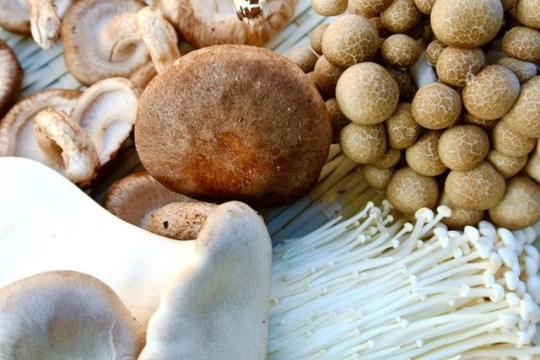
What is Kinoko (mushrooms)?
“Although there are many varieties of edible mushrooms, generally they can be divided into saprobic fungi and mycorrhizal fungi. Saprobic fungi include wood-rotting fungi, which grow out of the trunks of living trees.
Most of the mushrooms that can be cultivated are saprobic fungi; they break down fertilizers and the trees on which they feed. Wood-rotting fungi include shiitake, maitake, nameko, enokidake, buna-shimeji, hiratake, and eringi. White mushrooms and Agaricus do not grow out of trees but are still considered saprobic fungi.”

“Matsutake is a mushroom belonging to the class Basidiomycetes. It lives on the roots of Japanese red pine and grows wild on the ground in forests of red pine during autumn...Moreover, matsutake cannot grow unless specific natural conditions are miraculously met. The environment must have just the right sunlight exposure, temperature, humidity, amount of soil microorganisms, and various other conditions.
Kinkatsu refers to a healthy way of eating based on fermented foods Japanese people have long incorporated into their diet many fermented foods produced by microorganisms. The health benefits of these fermented foods have recently garnered attention. Mushrooms are the only fungi that can be consumed as food. They are low in calories and rich in immune-boosting nutrients such as dietary fiber, vitamin Bs, vitamin D, beta-glucan, and ornithine. The dietary fiber in mushrooms can absorb cholesterol and lipids in the intestines and remove them from the body. At the same time, they help create a healthy intestinal environment by increasing good bacteria, which can improve the complexion.”
(via What is Kinoko (mushrooms)? | We Love Japanese Food)

7 Popular Japanese Mushrooms That Are Both Tasty and Healthy
“Japanese mushrooms – the first thing to know is that “take” means “mushroom” in Japanese.”
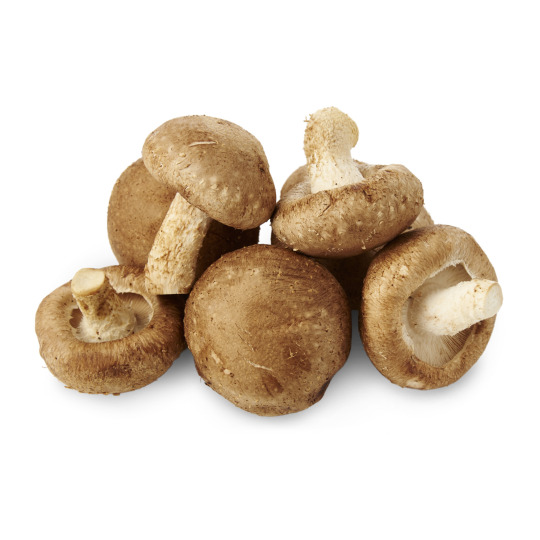
“Shiitake is the one Japanese mushroom that most people will have heard of. “Shii” is the Japanese word for one of the trees this healthy treat grows on. Combined with the Japanese for mushroom, you’ll get the word “shiitake,” or shii mushroom. They are packed with healthy nutrients, have relatively large brown caps, ranging from tan to dark in color, and white stems.”
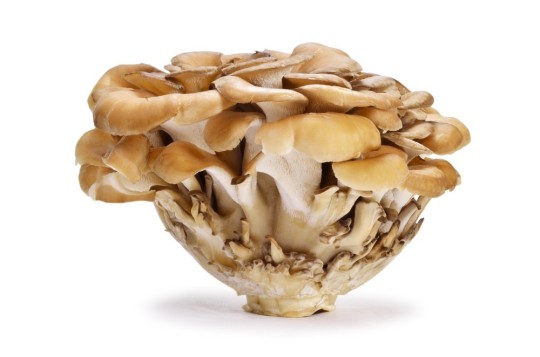
“You might know it as Hen-of-the-wood or even sheep’s head, but in Japan, this funny looking mushroom is called maitake. Literally translating to “dancing mushroom,” this healthy fungal delicacy can be found in Japanese hardwood forests, as well as in parts of China, Europe, and North America.”
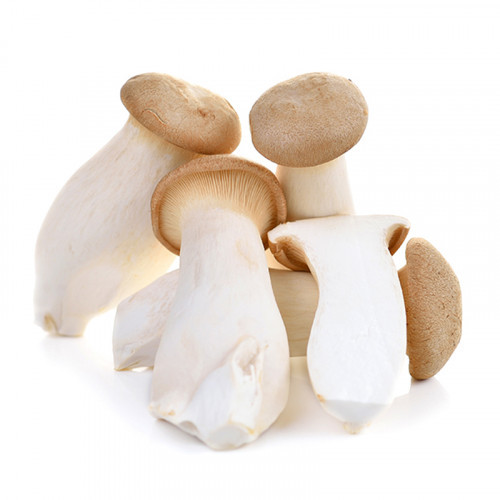
“Eringi, King Trumpet, King Oyster, and French Horn. Eryngii go by many names and are the largest of all oyster mushrooms. It doesn’t only grow in Japan and other parts of Asia, but also in Mediterranean Europe, the Middle East, and North Africa. You can easily recognize it by its characteristic meaty, white stem and relatively small, brown cap.”
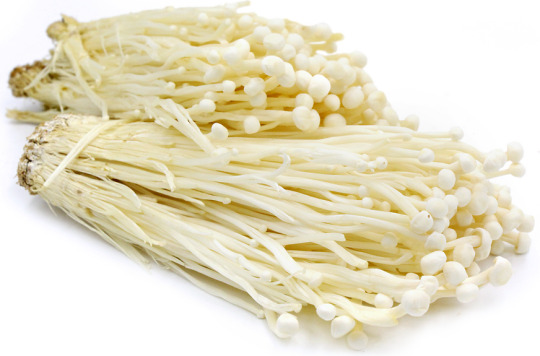
“These little mushroom clusters called enoki or enokitake are thin, long, and fragile, much like little flowers. They’re a well-used ingredient not only in Japanese cuisine but also in Chinese and Korean, and because their main season lasts from September to March, they are sometimes called “winter mushroom” in English.”
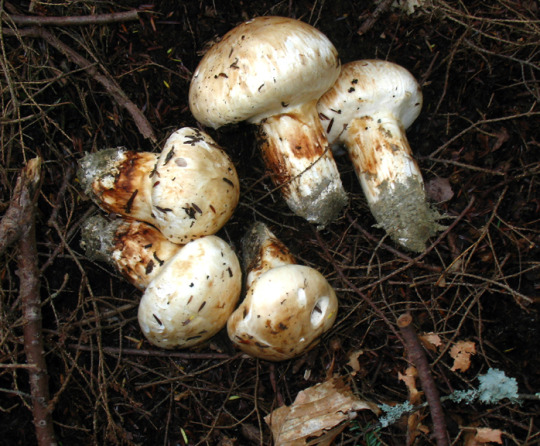
“Mushroom lovers are sure to know matsutake, a prized, sought-after mushroom that is famous for its characteristic spiciness. While it grows in Asia, Europe, and North America, it can prove extremely hard to find, as it requires a very specific kind of forest and terrain to grow. In Japan, they can mainly be found under red pines and the first matsutake harvest in fall can fetch prices of 1,000 dollars or more per kilogram! According to historical documents, matsutake picking was also a favorite pastime of samurai.”
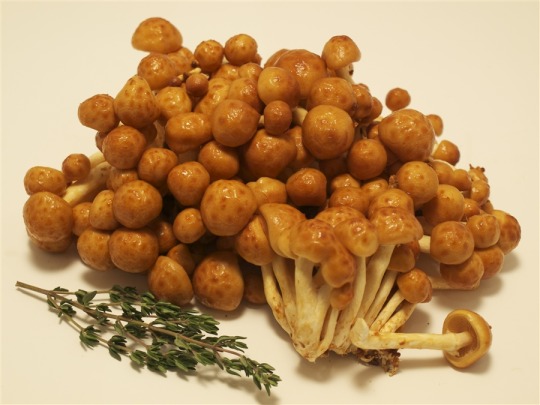
“Nameko is a curious little mushroom. In nature, it appears as a cluster of small mushrooms with orange caps that have a characteristic gelatinous coating. In Japanese pop culture, they’re a fairly famous comic character that first appeared in the DS game “Touch Detective” – you might know the little fellow as “Funghi.” Now, Nameko has his own mobile game called Mushroom Garden. The mildly nutty taste makes the mushroom a staple ingredient of Japanese cuisineand you’ll often see it used in stir-fries and for noodles...You’ll also encounter nameko as a popular and healthy ingredient in sushi rolls. In the States, this little orange delicacy is also called “butterscotch mushroom.”

“Found in East Asia and Northern Europe, shimeji is actually a group of mushrooms that come in different shapes and colors. They all have a similar texture and taste, however – while the raw mushrooms are slightly bitter, this unpleasant aroma disappears entirely when cooked, leaving you with a delightfully crunchy texture and mild, nutty flavor. As far as dishes go, shimeji can be used for pretty much anything. From stir-fries to soups, from hot pots to pasta dishes, and even as a side or sauce...”
(via 7 Popular Japanese Mushrooms That Are Both Tasty and Healthy | LIVE JAPAN)

The Shiitake Mushroom- A History in Magic and Folklore
“The shiitake is vastly popular as a dietary choice in China and Japan. In Japan, the creme de la crème of shiitake crop is called donko. In China, it is known as shanku and dongo...Tapestries and Chinese manuscripts depict deities holding several species of medicinal mushroom, including the shiitake, which finds applications in Chinese culture as an aphrodisiac and a promoter of youthfulness and virility.
The Japanese developed a convenient method to cultivate mushrooms. Called the ‘soak and strike’ method, it involved inoculating a tree log with collected spores, and leaving them out in a moist atmosphere. The logs are cut from a tree and placed horizontally, followed by an injection of spores. In fact, this method was synonymous with a development of a male child into a man.”
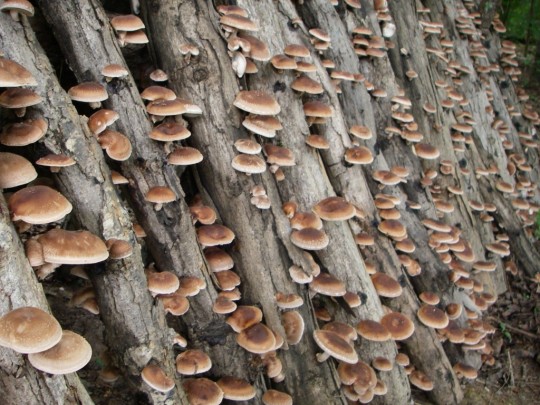
“Logs inoculated during a child’s birth would mature with him till he attains manhood, and inherit the ‘fortune’ in his backyard. Thus, the shiitake was a prized possession, and people went to the extent of robbing them from one another, leading to what was known as a ‘shiitake war’.
It is clear that the Orient deems mushrooms, in general, as storehouses of the power of healing. As compared to the depiction of the mushroom as a ‘quaint fungus’ in the West, what is known as the ‘Orient’ holds the mushroom in high esteem...Today, the shiitake is grown in several parts of the world. The United States, for instance, cultivates mushroom in several states, including Indiana and Pennsylvania.”
(via The Shiitake Mushroom- A History in Magic and Folklore | goUNESCO)

Chinese History - Southern Dynasties Period Economy
“The first real porcelain was produced in the southern facilities during the time of Eastern Jin. Green glazed porcelain (qingci 青瓷) and imprinted ware (yinwen yingtao 印紋硬陶) with brown dots (jiangseyou caiban 醬色釉彩斑) were produced in the kilns of modern Jiangsu and Zhejiang Prov. Paper (zhi 紙) totally replaced the use of silk and bamboo slips as writing material. Other trade and commercial products of the Southern Dynasties were lacquerware (qiqi 漆器) and tea (cha 茶).”
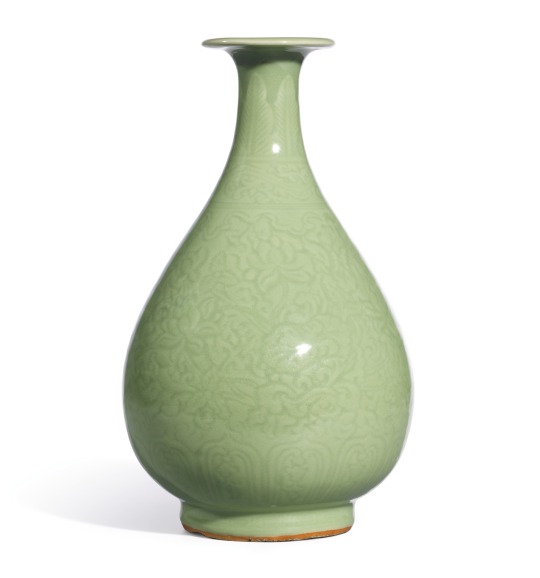
“Fabric, especially silk, was not only an important item for direct cloth production, but also for tax in kind. For daily use, it was still too expensive to be affordable for the average population. The production of silk was in the hands of the state, like salt production (sea salt in Jiangsu and well salt in Sichuan) and mining and metallurgical engineering.”
(via Chinese History - Southern Dynasties Period Economy | ChinaKnowledge)

History of silk
“Silk cultivation spread to Japan around 300 AD, and, by 522 AD, the Byzantines managed to obtain silkworm eggs and were able to begin silkworm cultivation. The Arabs also began to manufacture silk at the same time. As a result of the spread of sericulture, Chinese silk exports became less important, although they still maintained dominance over the luxury silk market.”

The Crusades brought silk production to Western Europe, in particular to many Italian states, which saw an economic boom exporting silk to the rest of Europe...Techniques of sericulture were subsequently introduced to Japan on a larger scale by frequent diplomatic exchanges between the 8th and 9th centuries.”

”Starting in the 4th century BC silk began to reach the Hellenistic world by merchants who would exchange it for gold, ivory, horses or precious stones. Up to the frontiers of the Roman Empire, silk became a monetary standard for estimating the value of different products.”

“The church manufacture in the Byzantine Empire was thus able to make fabrics for the emperor, with the intention of developing a large silk industry in the Eastern Roman Empire...These gynecia had a legal monopoly on the fabric, but the empire continued to import silk from other major urban centres on the Mediterranean. The magnificence of the Byzantine techniques was not a result of the manufacturing process, but instead of the meticulous attention paid to the execution and decorations. The weaving techniques they used were taken from Egypt.”
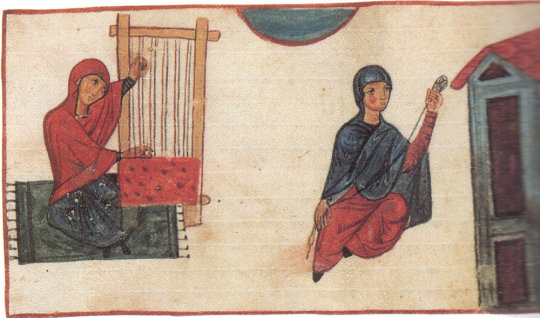
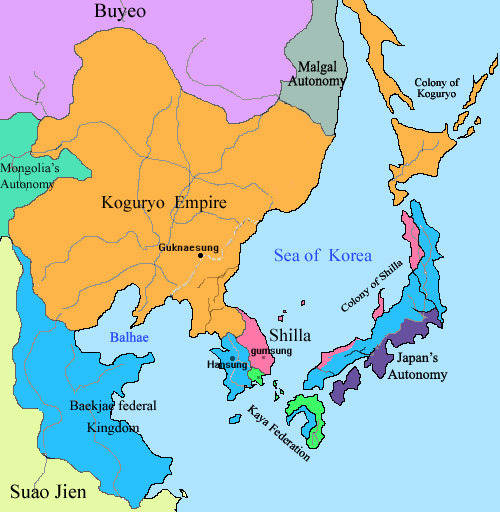
Map 1-1
Japan (500-1200 AD): A Brief Introduction
“During the fifth and sixth centuries, a three-cornered military balance developed on the Korean peninsula between the states of Paekche in the southwest, Silla in the east, and Koguryo in the north (see Map 1-1). Japan was an ally of Paekche and maintained extensive trade and military relations with a weak southern federation known as the Kaya Federation (States). Scholars ask whether there was a cultural basis for these ties—like those of Norman England to Normandy.”
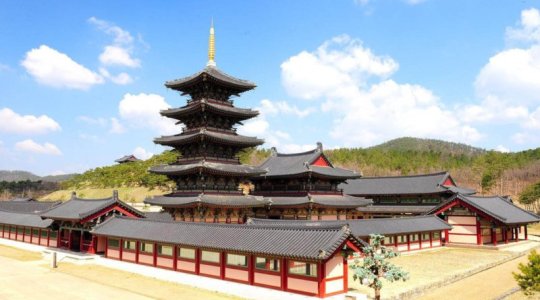
”Paekche also served as a conduit for the first elements of Chinese culture to reach Japan. Chinese writing was adopted for the transcription of Japanese names during the fifth or sixth century. Confucianism entered in 513, when Paekche sent a “scholar of the Five Classics.” Buddhism arrived in 538, when a Paekche king sent a Buddha image, sutras, and possibly a priest.
In 665, Silla conquered Paekche. Japan feared an invasion by Silla, its erstwhile enemy, but an invasion never came. In the end, the rupture of ties with Korea was less of a loss than it would have been earlier, for by this time Japan had established direct relations with China.”
(via The History Of Japan 500-2000 AD | Subratachak blog)
The Kikuchi clan and Baekje
“There are theories that the Kikuchi clan of Higo Province (Kyushu) are from Baekje. They have found a golden statue in the ruins of the castle that is from Baekje and there are records saying that the founder of the Kikuchi, Kikuchi Noritaka (菊池 則隆) is the son of Masanori (政則) and grandson of Chikanori (親則).”
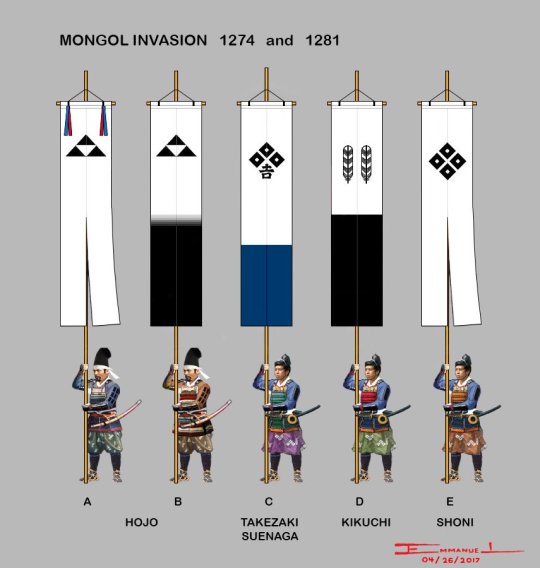
Kikuchi clan
“Japanese genealogist, Suzuki Matoshi claimed the clan was from the Korean kingdom of Baekje while Oota Akira, Japanese historian, claimed the clan originated from Ki clan. Many famous warriors have come from this family such as Kikuchi Takanao, Kikuchi Takefusa who stopped the Mongol Invasions of Japan, Kikuchi Taketoki and Kikuchi Takemitsu whose stories have become some of the most colorful in Japanese history.”
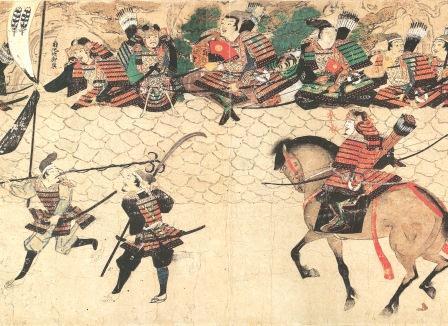
Kija's Tomb
“Jizi allegedly fled China to Korea, where he founded the state of Gija Joseon and eventually succeeded the Dangun as king of Gojoseon. Legend says that Gija brought to the Korean people many skills from China, such as agriculture and weaving; he is also credited with founding the city of Pyongyang.”
”The site of Gija's burial mound was identified during the Goryeo Dynasty by King Sukjong, who constructed the first mausoleum at the 1102. A memorial temple was later added and the mausoleum was enlarged and repaired in 1324 and again in 1355.
In 1570 King Seonjo of Joseon erected a monument at the site requiring all people riding past to dismount out of respect. When Korea was under Japanese rule, the site was heavily promoted as a tourist venue by the Japanese, who tempered Korean ethnic nationalism by pointing out that the first "Korean" kingdom was founded by a foreigner.“
#kinokomushroom#maitake#matsutake#shiitake#nameko#eryngi#kijatomb#kikuchiclan#baekje#greenporcelain#silkhe#kiclan#italiansilk
0 notes
Text
The Catalan Language: How to Learn Catalan Quickly
The Catalan language may have a small global footprint with approximately 10 million speakers. But when you learn this language, a whole new world opens up to you. First, you’ll be introduced to some beautiful places. The majority of Catalan speakers are found in Catalunya (often referred to as “Catalonia” in English), in the northeastern corner of Spain, a place where you can both laze on idyllic beaches and climb dramatic mountains. Catalan is also spoken in the Mediterranean paradises of the Balearic Islands and the city of Alghero in Sardinia, Italy. A variant is also spoken in Valencia, Spain, home of the world-famous paella. There are Catalan speakers in southern France along the border with Catalunya. Catalan is also the national language of Andorra, a tiny country tucked high into the breathtaking Pyrenees mountains. [caption id="attachment_20121" align="aligncenter" width="1024"] Winter hiking in the Catalan Pyrenees. Photo credit: Lisa Hoashi.[/caption] When you learn the Catalan language you get greater access to the Pyrenees – full of climbing, trekking, paragliding and skiing routes – as well as to magnificent Mediterranean islands and beaches, lovely countryside, and vibrant cities. You’ll be able to fully appreciate many historic sites leftover from the Greeks, Romans, Moors, and the many other peoples who invaded these historically sought-after lands. [caption id="attachment_20123" align="aligncenter" width="1024"] Platja del Port Peregrí in Calella de Palafrugell on the Costa Brava. Photo credit: Andrea Ciambra[/caption] You’ll meet some great people, get to know their rich cultural history, and desirable way of life. Famous Catalans include artists Salvador Dalí and Joan Miró, cellist Pablo Casals, architect Antoni Gaudí, and chef Ferran Adrià. [caption id="attachment_20124" align="aligncenter" width="1024"] Game of Thrones, season six, filmed on these steps leading to the Cathedral of Girona, Spain. Photo credit: Georges Jansoone[/caption] The gorgeous, friendly and culturally vibrant seaside city of Barcelona is the capital of Catalunya. It has great architecture, fabulous restaurants and lively festivals, such as La Mercè, a city-wide, multi-day party every September featuring free cultural and music events. Catalans are known for their delicious Mediterranean cuisine. (Many say that in Spain, their only rival in regional cuisine are the Basques). The recipes are simple; what makes them so outstanding are the tasty and fresh ingredients, including delectable olive oil, seafood, tomatoes, cheeses and charcuterie. The wine and cava (Catalan sparkling wine) also excellent – and very affordable. This is a place to savour your food and drink in the sunshine. Finally, they have an awesome soccer team. Lionel Messi might be from Argentina but he plays for Barça! [caption id="attachment_20125" align="aligncenter" width="1024"] Lionel Messi of Barcelona against Osasuna. Photo credit: Jeroen Bennink.[/caption]
Learning the Catalan Language is (kind of) Revolutionary
If you’re going to learn Catalan, there is some important cultural and political background that you should know. First, Catalunya is officially considered an “autonomous community” within Spain. It has its own government which includes, for example, its own president, parliament and police force. This democratic political set-up has been in place since 1978, three years after Spanish dictator Francisco Franco died. A couple of important notes about this: First, the Catalan language was banned when Franco was in power. Franco enforced the use of Spanish in its place. During this 36-year period, Catalan went largely underground. School was conducted entirely in Spanish. Many Catalans continued speaking the language in the privacy and safety of their own homes but it disappeared from the public arena. Today – in most parts of Catalunya outside Barcelona – you’ll find that most people speak exclusively Catalan. The older generations, those raised during Franco’s dictatorship, can produce a rusty Spanish if needed, but they generally prefer to speak Catalan. Some elderly also don’t know how to write Catalan very well since they never learned it in school. After democracy and the autonomous Catalan government (known as the Generalitat de Catalunya) was restored in 1978, the Catalan language reemerged in the public arena once again, in full force. Seen as a key element of Catalunya’s national patrimony, Catalan is promoted by special funding and initiatives of the Generalitat de Catalunya (some of which especially benefit Catalan learners - see the resources section below). Second, there is a strong independence movement in Catalunya. Most recently, the Catalan government announced a referendum in November of 2014 to see if the majority of the population wanted to split from Spain. When the Spanish government declared the referendum “unconstitutional,” Catalan president Artur Mas went forward with it anyway, even though the results would be “non-binding.” In that referendum, 81 percent voted for independence, though voter turnout was only 42 percent. Depending where you visit, you will find some people highly opposed to breaking from Spain and others staunchly in favour. Where I live, a rural town in the centre of Catalunya, it seems like the majority of people are pro-independence. (Our mayor was recently arrested after she refused to take down the Catalan independence flag on City Hall during elections!). Speaking purely Catalan and participating in Catalan cultural activities – such as castells (building human towers) – are seen as pro-independence actions in places like these. [caption id="attachment_20126" align="aligncenter" width="1024"] Castells is the making of human towers, a purely Catalan phenomenon. Photo credit: Escuraxemeneies.[/caption]
Why Catalan is Easy and Fun to Learn
Catalan is not difficult to learn – especially if you already speak another Romance language. Many people think Catalan is a dialect of Spanish and that’s not true at all. It’s as different from Spanish as is Portuguese or Italian. Like these languages, it did come originally from Latin. So there are many similarities. When it comes to vocabulary, pronunciation and grammar, Catalan actually has more in common with French than Spanish. That being said, however, many people – like me – come to Catalan by way of wanting to learn Spanish. I know I am not the first person to land on Barcelona’s sunny shores ignorantly expecting to practise my Spanish – only to learn that the dominant language here is Catalan. Like many people who visit Catalunya, I fell in love with the culture and lifestyle and end up staying. (In my case, I literally fell in love with a Catalan farmer, and married him!) Spanish is my strongest second language. Japanese is the language of my father’s family, so I also grew up exposed to it. I’ve taken beginner courses in Japanese, French, and Arabic. I know, especially from trying to learn Arabic, that when picking up a new language it helps to link new vocabulary and grammar rules with what you already know. Arabic was very difficult because I felt like I had nothing to “hook” the words to in my brain – no similarities or associations to help me remember. By contrast – thanks to having lots of Spanish and a little French, I had plenty of “hooks” for Catalan. It was very “sticky” – plus I really like the way Catalan sounds. It’s not as musically effusive as Spanish. It’s more emphatic like French. There are plenty of examples of verbs that are the similar or the same in Spanish and Catalan, and in French and Catalan. Here are a few for Spanish:
Acabar – to end, to finish
Cantar – to sing
Caminar – to walk
Estar – to be
Poder – to be able to
Saber – to know
Ser – to be
Yet the verb conjugations are quite different. See with example of the verb “acabar”: And here are some of the similar verbs between French and Catalan: See how many similarities you’ll find if you speak another Romance language? Easy!
How Catalan Pronunciation is Similar to Spanish
Before we dive into the unique letters and sounds found in Catalan, it’s worth mentioning a few that you’ll already know if you speak Spanish.
The Rolled “R”
Like the Spanish, the Catalans roll their r’s.
The Sounds of “V” and “B”
In Catalan, as in Spanish, the sound of the letters “V” and “B” are the same.
“Ñ” Becomes “YA”
Catalan doesn’t use the letter “ñ” – instead they spell out the sound phonetically as “nya”. For example, Catalans would spell their home, “Catalunya” – whereas the Spanish would spell it as “Cataluña”. Another example: The word “to accompany” in Spanish is acompañar, whereas in Catalan it’s acompanyar.
Unique Letters and Sounds in Catalan Pronunciation
Maybe because I’m a writer and avid reader, I enjoy learning how to spell words in a new language. I love how Catalan introduced me to some totally new combinations of letters and sounds.
Pronouncing “X” as “CH”
My favorite by far is the Catalan “x” which is pronounced as “ch”. For example, the word for “lamb” – xai – is pronounced just like that spicy Indian tea drink: “chai”. Bet you can guess what this is: xocolata. That’s right, it’s chocolate. And here are two proper nouns: Xile and Xina. Have you figured them out? You got it: Chile and China.
“G” can also make a “CH” Sound
The “ch” sound is very common in Catalan. The “g” can also make this sound (or something very, very similar). For example, you may have at some point run across this common Catalan surname: Puig. An English speaker might take a stab at this one as “Poog”. But to pronounce it correctly in Catalan it instead has a real bite: “poot-CH” with the “CH” extremely curt at the end. Another common “g” word is vaig which means “I go.” The pronunciation is something like, “baa-CH”.
The Cedilla “Ç”
The “C” with the cedilla (the little tail underneath the “c”) is a Latin script letter that is pronounced in Catalan as a hissing “s” (as in “snake”). For example, the verb “to begin” is començar, pronounced “comenssar.” Or, take the word for “effort”, which is esforç. That’s pronounced “esforss.” This letter doesn’t occur very often in Catalan.
“LL” - a Challenging Sound to Learn
The unique sound of the “ll” is very challenging to learn – and it’s common in Catalan! First, do not assume this will make the same sound as in Spanish. It’s quite different. In Spanish, the “ll” basically makes a “ya” sound. Me llamo = “may yamo.” However, in Catalan, the “ll” makes more of a “yeuh” sound. For example, the word for “language” is llengua and is pronounced as “yeuhng-wa.” To make the correct sound of the “ll,” you must learn a whole new way of using your mouth: You have to flatten the front of your tongue and push it against the back of your top teeth to produce it. It’s really difficult! And the worst part is that Catalans often don’t understand what word you’re getting at unless you make this sound correctly. If it makes you feel any better, some of my Catalan friends say that they had to practise making this sound over and over when they were kids. One even suggested sticking the tip of a pencil vertically inside my front teeth to properly train my tongue (Hey, that kind of works!).
“NY” - Another Challenging Sound
This is also a very common letter combination and quite difficult, especially maybe for visual learners (like me) who see “ny” at the end of a word and want to pronounce it “nee”. The “ny” sound essentially is the same as a Spanish “ñ” – but without a vowel following. If this doesn’t make any sense to you, you’re not alone. In Spanish, an ñ is always accompanied by a vowel afterward, such as in mañana (man-ya-na) or baño (ban-yo). Now try to say baño but without the “o” at the end. That’s how you say bany in Catalan, which also means “bath.” Did that totally stump your brain? Yeah, me too. I’m still trying to figure out this sound. The blank looks that I get when I say any (“year”) or lluny (“far” – which has the added fun of the LL too) assure me that I still have some more practising to do.
Catalan Resources: Free Online Courses for Learning Catalan
With the movement afoot to encourage more Catalan usage and speakers, you can benefit from some really great resources in learning the language – especially from the Generalitat de Catalunya. The best is Parla.Cat, which offers free online Catalan courses developed by the Generalitat de Catalunya. You can sign up to use this website from anywhere in the world (my mom signed up in Portland, Oregon) and choose to either have a self-guided course or a hire a tutor additionally for a nominal fee. The website’s design and functionality feels a little dated, but the materials and lesson plans are top-notch. Catalan is also an option on Duolingo, although only if you have the website language set to Spanish. That means that if your native language is English – you get a double workout in the tutorials, translating Spanish to Catalan and vice versa.
Catalan Language Courses: Low-Cost Classes for Learning Catalan
If you are able to actually spend some time in Catalunya (Hello, Barcelona!), you can also take advantage of highly subsidized in-person classes offered by the Consorci per a la Normalització Lingüística. Most medium-sized or larger towns in Catalunya offer these high-quality classes. In my town of approximately 20,000 people for example, I was able to take three levels of beginner courses. A course generally lasts three months, meets twice a week for two and a half hours, and costs under €15 for the entire semester. What a bargain! These classes are an interesting sociological immersion as well, where you will meet fellow immigrants to Catalunya. In my classes there were people from other parts of Spain, China, Morocco, Dominican Republic, Ecuador and Venezuela.
How to Practise Catalan with Native Speakers
Catalans are accustomed to foreigners speaking Spanish or English, so if you strike up a conversation in Catalan, they will likely be both surprised and pleased. Many people in Catalunya are also eager to learn English, so you should have no problem finding partners for language exchanges in person, or through websites such as italki.
Begin Your Catalan Adventure
Are you learning Catalan? I’d love to know your reasons for doing so - and any challenges you’ve faced. Tell me more in the comments. Continue your adventures into català, and you’re sure to meet many wonderful new friends along the way.
The post The Catalan Language: How to Learn Catalan Quickly appeared first on Fluent in 3 months - Language Hacking and Travel Tips.
Shared by learntospeakspanishquickly.com: http://ift.tt/2iDDM47 from Blogger http://ift.tt/2jlTlzr
4 notes
·
View notes
Text
Lett å være rebell i kjellerleiligheten din
A comment I wrote to Aebern L on Youtube for Karpe Diem’s single: Easy to (be) a rebel in your apartment flat.
youtube
They're defending immigrants by using common phrases from the immigrant debate, and are calling out the politician Anders Anundsen from the FRP party [for being a coward] and wanting a more restrictive immigration policy. You can find an English translation of the song here: https://www.musixmatch.com/lyrics/Karpe-4/Lett-%C3%A5-v%C3%A6re-rebell-i-kjellerleiligheten-din/translation/english. You can find the references explained on the song's Genius page. Just use google translate to figure out what's written. https://genius.com/Karpe-diem-lett-a-vre-rebell-i-kjellerleiligheten-din-lyrics.
Karpe Diem has said that "the goal was to collect sentences, phrases and words people [in Norway] uses in the dehumanization of other ethnicities, religions and cultures. The comment section [of many major news outlets] is the place where people has the most freedom after all, and there everything comes out [people don't limit what they say]. Things they've "heard", repeated in a place where they think they're alone."
Terms and words explained
Apekatter means monkeys and is used as a hateful expression towards ethnic minorities that move into communal blocks.
Abu Bakr was leader of ISIS since 2010. Him being in a cockpit is a reference to 9/11.
"Is this what my tax money goes towards?" is a typical question you can find on comment sections of Norwegian news outlet websites. Norway's high taxes has been the subject of many complaints. Those who are already critical about immigrants therefore react strongly on the thought that their money is going towards helping immigrants settle down in the country.
"Ankerbarn" means anchor-kids refers to refugees who takes advantage of the system. It's claimed that families sends lone underage kids in advance to Norway, since children have an easier time gaining asylum, and thus the remaining people can apply for family reunion later on.
"Mokkamenn" basically translates as Mocha men and was an unfortunate comment that a Norwegian artist made when he won an award for his song "Møkkamann" (or dirty man, think in the context of working men). The person handing him the prize was black, so he made a pun: "when I see you guys, the song suddenly gains a new name: Mocha man".
So "The asylum-kids came, so mocha men can win the lottery" refers to the fact that gaining residence permit in the Norwegian welfare state would be like winning the lottery for many, due to the safety and advantages of Norwegian citizenship.
"They claim to come from poverty, yet they could afford a boat" refers to refugees crossing the Mediterranean in overfilled boats, thus some "though commenters" believes they can't be as poor as they give the impression to be - since they could afford a luxury item: a boat.
"Dogs born in a stable aren't horses or farm animals" is another sentence taken from comment sections, which claims that second generation immigrants still aren't Norwegian even if they're born and grown in the country.
"You're all made from the same wool" is a quote taken from Mulla Krekar, a Iraqi kurd living in Norway. He's been listed on UN's terror list since 2006 and in 2012 he was convicted to five years of prison for terror- and death threats. What the phrase basically means is that they all [not sure if he's just referencing immigrants or the human race in general] have the same religion, am of the same race, and have the same attitudes as Krekar. They're all put in the same box, and threathens to be punished due to their ethnicity.
“knulla” is a very vulgar word for hardcore sex
“Mulla, mulla, mulla, mulla, mulla” probably refers to Mulla Krekar. Mulla is also Arabic for lord and is a umbrella term for [religious] jurists in Sjia-Islam and in Asian Sunni-Islam.
"Baba" is father in Swahili and also means someone one considers to have authority over you.
"If you only knew what I would give to be like you" refers to the identity crisis that the artists (Karpe Diem) felt growing up as Norwegians with immigrant backgrounds. In an interview he has said that "when we were kids-kids I felt a bit of that. I hated that we for instance went to Grønland* to shop for groceries on the weekends. I thought it was so much nicer to shop our groceries where "everyone else" [all the other kids] shopped. There you could buy letter-shaped cookies and not three packs of noodles for $1. When you're a kid you don't want to stick out, but now after some time has passed you just become happy for it. I didn't understand that I stood out. There were a lot of people who called me "nigger" and "fucking nigger", and I thought "huh, why are you calling me that?"
Grønland is a neighbourhood in central Oslo where most of the inhabitants are immigrants. It's basically a downtown immigrant hub. Closeby Tøyen is also filled with immigrants, although the place is subject to gentrification nowadays.
"It's so easy to be a rebel in your basement-flat*" refers to the fact that it's easy to be "tough" and come with hateful expressions in comment sections on the internet when you sit safely at home in your own basement flat. It's cowardly to not dare say anything to people face-to-face, but rather hide behind a PC-screen and keyboard.
Basement-flat is what most people's first rent to live in when they move away from home. It's basically a very cheap living place in the basement of the landlord's house (usually a family lives upstairs). In this context it most likely refers to the fact that these commentors haven't really gotten that far in life themselves. Most likely they still live with their parents and spends their nights in the basement-flat of their parents. On the other hand, it could also hint to that you do have a pretty nice and/or large house that in many cases costs quite a bit.
Tshawe, Nico, and Vinz are famous Norwegian rappers with immigrant backgrounds.
"You're the one bringing my daughter to the movies?" is an ironic question that's asked when those with immigrant backgrounds brings someone fully Norwegian to the movies. They're paranoid that it'll lead to negative events. [Like rape or something]
Kygo is a famous Norwegian DJ and producer.
Hijab is a headdress that Muslim women uses for humility purposes, among other things.
"I'm not racist, but ..." right before a racist comment is a sly (but ironic) way of protecting oneself.
kinda-kinda-passport refers to passports you gain from living in Norway for a while, and isn't considered to be worth as much as one belonging to someone ethnically Norwegian.
NAVer is used about those who don’t work [on purpose], but rather receive welfare money from the state (tax money).
NAV is the Norwegian Labour and Welfare Organization
"Who's watching the cops?" or guardians is basically asking: who will make sure that those that carries out the law, follows it themselves?
"Who cuts the hairdresser?" is an allusion to the Barber Paradox: who's responsible/liable for those who fail their own responsibilities?
"quasi" means kinda and is used in Norwegian as a synonym for "illegitimate"
Nikka is a Japanese whisky brand. Drinking this makes you appear as a "knower".
"smoking something that makes them Asian" refers to the fact that some people tend to squint under the influence of cannabis, and the fact that many Asians has epicanthal folds, a trait that makes their eyes appear narrower.
“ ’til someone says every government needs their [own] monkey" refers to several things. Monkey in Norwegian is "ape" and in this context they're refering to the labour party, AP (Arbeiderpartiet), which is the largest party in Norway today, and has been a part of several governments. And since AP has similar pronunciation as "ape" or monkey, which they in this context is referring to a coloured person. A monkey can also be used to refer to an idiot - a popular person that appears less serious than the rest of the politicians. In this context they're talking about Anders Anundsen.
Anundsen is a FRP-politician and was the Norwegian minister of justice from 2013-2016 and became the subject of a controversy surrounding the deportation of so-called "long-term asylum children", children of asylum seekers who have had their application rejected, only to continue living in Norway illegally for several years. He and FRP has always wanted a pretty restrictive immigration policy. They place a lot of emphasis on helping in the adjacent areas instead. There's many who agree with this idea of handling things, but others believes that's not feasible since the situation there is dire so we can't keep letting in so few people.
"Karpe has opened enough doors now, time to close some" refers to the fact that Karpe Diem is so well liked in Norway that they can afford to burn some bridges. Therefore they're willing to release a single that will create a lot of debate.
Arif and Kaveh are Norwegian rappers with immigrant backgrounds that have managed to make something big out of their lives. The parallel is drawn to the asylum kids who never gets a chance since they're not let in.
Lord is used as a metaphor for ethnic Norwegians, while Little lord referring to immigrants which are in minority and thus "smaller". Little lord is also the title of a Norwegian novel written by Johan Borgen, which describes the protagonist's upbringing in a bourgeouis home during the beginning of the 20th century, and his quest for his own identity.
English translation of the lyrics
Monkeys in my [apartment] complex and Abu Bakr in my cockpit! (Is this what my taxes goes towards?) Your anchor babies came, so that moccha men can win the lottery (Is this what my taxes goes towards?) They said they came from poverty, but could afford to ride a boat here (Is this what my taxes goes towards?) Dogs born in stables aren't horses or farm animals (Is this what my taxes goes towards?) You're all [cut] from the same cloth (You’ll all be fucked/shagged) Mullah, mullah, mullah, mullah, mullah You're all the same (You’ll all be fucked/shagged) Mullah, mullah, mullah, mullah, mullah
If you only knew what I would do to be like you, be like you, baba, be like you If you only knew what I would do to be like you You coward And it's so easy to be a rebel in your basement apartment It's so easy to be a rebel in your basement apartment It's so easy to be a rebel in your basement apartment You coward
I don't give a shit if you're Tshawe or Vinz or Nico (Are you the one taking my daughter to the movies?) You're cool today perhaps, but she'll be marrying Kygo (Are you the one taking my daughter to the movies?) Is the hijab in the backseat; is she going to be a muslim now? (Are you the one taking my daughter to the movies?) I'm not a racist, but is that kinda kinda passport of yours supposed to mean something? (Are you the one taking my daughter to the movies?)
Picking fruits in our gardens, you'll never be Scandinavian NAVer, NAVer, NAVer, NAVer, NAVer Picking fruits in our gardens, you'll never be Scandinavian NAVer, NAVer, NAVer, NAVer, NAVer
If you only knew what I would do to be like you, be like you, baba, be like you If you only knew what I would do to be like you You coward And it's so easy to be a rebel in your basement apartment It's so easy to be a rebel in your basement apartment It's so easy to be a rebel in your basement apartment You coward
My boys go fuck, holy shit, holy fuck Who's watching the cops, who's cutting the hairdresser? Asking provocative questions; quasi-smart Drinking Nikka, smoking something that makes them Asian Until someone says that each government needs their monkey And everyone thinks it's a good pun Because it means two things, and that's kinda the requirement for something like that, yeah Anders, Anders, Anders Anundsen My black guys said some wise words "Karpe has opened enough doors now, time to close some" If Arif or Kaveh or the refugee children are let [or slips] in What the fuck will they do there, brother? Say that to Anders, Anders, Anders Anundsen
0 notes
Text
My Best Travel Recommendations
This is part 3 of a series: Two Years In
My 9 Favorite Cities to Visit So Far
Amsterdam
Amsterdam is a beautiful and vibrant European city. The layout of the city is very special, with its canals, small stone streets, and slender houses. There’s lots for a tourist to do - a boat ride in the aforementioned canals, the Rijksmuseum, the Van Gogh Museum, Anne Frank House, Vondelpark, a tour of the famous Red Light District, and even a lazy afternoon at one of the famous “coffee shops”. Although Dutch cuisine isn’t my favorite, we still found plenty of delicious food… the cocktails and small-bites at Tales and Spirits are fantastic, the traditional Indonesian Rijsttafel is a great experience, you’re never far away from some pickled herring, and there’s enough international cuisine to satisfy most palettes.
Bangkok
Bangkok is a prototypical southeast Asian city, with all the skyscrapers, traffic, affordability, and general vibrance that’s characteristic of the region, but without much of the dirtiness and dilapidation that is found in many other southeast Asian capitals. Bangkok has enough temples to keep most tourists busy for a few days, and there are quite a few day trips one can take after that, including Ayuttaha, which is the former capital of Siam and a UNESCO World Heritage Site. There’s so much incredible food in Bangkok, from world-famous street food to world-class and (relatively) affordable fine dining. The fine-dining highlight is Gaggan, a “progressive Indian” restaurant which was voted the best restaurant in Asia for four years in a row; other fine-dining standouts include Nahm (probably the spiciest fine-dining in the world) and Issaya Siamese Club. Fine-dining aside, Thai food is a favorite of mine; it’s easy to eat healthily and everything is exceptionally flavorful.
Barcelona
Barcelona is an understandably proud city in the understandably proud Catalonia region. It is a walkable city with pleasant year-round weather and beautiful architecture. This architecture is highlighted by the Gothic Quarter and by the many masterpieces of Antoni Gaudi, the centerpiece of which is La Sagrada Familia, arguably the most beautiful church in the world. If exploring the city isn’t enough, Montserrat, a mountain-top monastery and UNESCO World Heritage Site, and the Mediterranean coast wine region are both a short drive away. Barcelona also has an exceptional food scene. There are gourmet tapas bars all over the city, serving well-prepared dishes with premium ingredients alongside delicious local wines, at a bargain price. Fine-dining in Barcelona is second-to-none, with many world-class restaurants run by alumni of Ferran Adria’s groundbreaking restaurant El Bulli, including two world-class restaurants started by Ferran’s brother Albert Adria.
Hanoi
Hanoi’s old quarter is one of the most charming old-city areas anywhere, and a welcome respite from the rest of the hyper-urbanized chaos of most Southeast Asian cities. Although there are tourist streets and tourist traps, its relatively easy to steer clear and have a more authentic experience. I recommend starting each day with a bowl or two of street-side pho, while seated on a tiny plastic stool of course, and, at night, I recommend taking a food tour to sample the delicious morsels that hide in Hanoi’s back alleys. While visiting Hanoi, one must set aside one night to stay on a boat on Ha Long Bay, one of the most beautiful places on earth.
London
London is truly a city that has something for everyone. History, monuments, and museums abound, and when you find yourself in need of a break, pop into a local pub (an independent one, not one of the tourist pubs owned by a pub chain) or find a classic establishment for high tea. London has an excellent mid-range dining scene that covers just about every culinary genre, a strong high-end dining scene starring The Ledbury and The Clove Club, and one of the two best cocktail scenes anywhere, comparable to only New York.
Mexico City
Forget any preconceived notions you might have about Mexico City and find time for a visit. Most of the city’s many interesting neighborhoods are as safe as anywhere back home, and the city is easy to explore by foot or by Uber. As you would expect, the food is delicious, plentiful, and inexpensive. There’s also a world-class fine dining scene, highlighted by Pujol, a perennial contender for top restaurant in Latin America and home to a 1500+ day-old mole, presented simply with a newer mole and fresh tortillas.
Moscow
Moscow is a fascinating city, historic and chaotic at every turn. The architecture, unlike that of Saint Petersburg, is straight out the Soviet era, with gargantuan monolithic architectural delights aplenty. Despite what you may think you know about Russian food, the food in Moscow is truly excellent, highlighted by borscht (don’t knock it until you try it in Russia!) and pelmeni. Make sure to catch a performance at the Bolshoi, preferably a four-hour masterpiece of tragic and conflicted romance as is the classic Russian style. Just make sure to leave plenty of time for the truly awful traffic, or, better yet, travel via the luxurious metro system, in which many of the stations are museum-esque monuments to the working people.
Mumbai
Mumbai is the London of Southern Asia - all of the fun and frenzy of India in a western- and business-friendly package. Take a street-food tour or two to safely sample culinary delights from across the country, and/or just visit Swati Snacks for delicious street-style bites in a comfortable and modern casual dining setting. Visit the Elaphanta Caves, a World Heritage Site, as an easy day-trip. Consider splurging by staying at The Taj Palace Hotel, an iconic hotel just steps away from the Gateway of India arch monument.
Tokyo
Tokyo is a hyper-modern jewel of the developed Asian world, a densely populated, meticulously orchestrated tribute to the power of organization, punctuality, and a culture of excellence. Explore the sprawling labyrinthian Shinjuku station by following its underground corridors every which way, sampling from its many food courts, and poking your head into one of the many connected shopping centers, which are quite different from those you’re used to back home. Make sure to check out the basements of the shopping centers to sample even more delicious food. And, by whatever means necessary, make sure to try Japanese soft serve ice cream (probably my favorite dessert anywhere), and make sure to try it at a handful of places to make sure you find some of the really good stuff.
Honorable Mention: Berlin, Buenos Aires, Bucharest, Florence, Hong Kong, Kyiv
My 5 Favorite Countries To Visit So Far
Iceland
The land of fire and ice has become a hot spot for tourism, and it’s easy to understand why. The otherworldly beauty of Iceland’s landscapes is nothing short of breathtaking, and one can expect to cross into a new world of landscape and texture every hour on the ring road. Iceland’s capital, Reykjavik, and second city, Akureyri, are both charming Scandinavian cities, littered with cute (and expensive) restaurants and bars.
Italy
Italy has a diversity of world-class tourist destinations, each with exceptional and affordable food and wine. Rome is like a living museum, Florence has a wealth of sights and museums, the Emilio-Romania region (Bologna, Parma, Modena) has some of the best food in Italy, Tuscany has Italy’s most famous red wine, Milan is a modern european metropolis with one of the most famous paintings in the world (The Last Supper), Venice is a beautiful if overly touristic town, the Amalfi Coast and Lake Como are charming, and we haven’t even visited Cinque Terre or the Prosecco region yet. Like all of Western Europe, getting around is a breeze thanks to the rail system.
Russia
For us as western tourists, Eastern Europe has been a very interesting place to visit - some parts familiar and some parts new, with a rich and ever-evolving history deeply intertwined with the West’s. Russia is the heart of Eastern Europe, and hosts two world-class cities that each tell parts of the Eastern European story. Saint Petersburg is a beautifully classical European city that, to some extent, serves as a reminder of the conditions that led to the Soviet era. Moscow, on the other hand, has the feeling of a Soviet and post-Soviet city, and is itself beautiful in a very different way. We’re excited to visit Siberia next year to see what the rest of Russia has to offer.
Spain
Spain has so many places to visit, so much great food and wine, and an abundance of fun and unique festivals. Madrid and Barcelona are world-class cities, San Sebastian is a wonderful place to spend a long weekend hopping from Michelin-caliber tapas bar to tapas bar, and, although we haven’t yet visited, Seville and Granada are rumored to be lovely as well.
Thailand
Thailand has a world-class capital (Bangkok), a world-class second-city (Chiang Mai), world-class beaches (Ko Lanta, Ko Samui), and world-class cuisine. No wonder it’s the premier tourist destination in Southeast Asia.
Also worth mentioning: Japan, Mexico
5 Places that Deserve More Visitors
Jordan
Many western tourists don’t consider Jordan due to its proximity to the troubles in the Middle East. Their ignorance can be your gain if you choose to visit since Jordan continues to be a bastion of stability in a turbulent region. The capital Amman is a vibrant Arab capital, with plenty of local restaurants and hookah bars. Jerash is one of the best preserved Roman sights anywhere, Wadi Rum is a special desert landscape which makes for a nice overnight tent stay, and the Dead Sea is an interesting place to go for a quick saline dip. The crown jewel of Jordanian tourism, and one of the most spectacular historical sights anywhere, is Petra, a remarkably well-preserved prehistoric Nabataean city carved out of rock.
Kyiv
A beautiful Eastern European capital reminiscent of Saint Petersburg, Kyiv features beautiful European architecture, Soviet-era monuments, World Heritage historical sites, and a bustling modern atmosphere. If that’s not enough to keep you entertained, make a day trip to Chernobyl and stroll (safely) through the ruins while learning about one of the worst man-made disasters in history. Make sure to try the borscht - it’ll taste so much better than any borscht you’ve had outside of Eastern Europe.
Luang Prabang
Luang Prabang is a quiet, charming Southeast Asian town, and a perfect place to rest and relax. The town is a World Heritage Site littered with golden temples and the beautiful Kuang Si Falls is a short drive away. Laotian food is quite unique; sour is a dominant part of the flavor profile, and jeow, a sour chili paste, features prominently. Because of Laos’s colonial history, delicious French wine is found easily and is quite affordable relative to the rest of the region.
Moldova
The smallest of the former Soviet republics, Moldova is a great place to spend a few days drinking world-class wine, eating delicious food, and learning about the tumultuous history of the region. Moldova has the largest wine caves in the world, built during the Soviet era, and has many world-class wineries including Cricova, which produces excellent sparkling wines at Eastern-European prices. Moldova shares much of its cultural history with Romania, and thus the food is delicious, highlighted (in our opinion) by sarmale, cabbage stuffed with spiced ground meat and rice. Take a day trip to Transnistria, a breakaway region that’s de-facto independent with Russian backing, and visit the capital of Transnistria, Tiraspol, and Bender Fortress, a 16th-century Ottoman fortress.
Tunisia
Tunisia is fairly similar to Morocco, with its medinas and culture, but with far less tourism and therefore far fewer scams and far better food. We stayed in Tunis, Tunisia’s capital and biggest city, but I’ve read that Hammamet is great if you’re looking for a beach vacation on the Mediterranean. Take day trips to El Jem, a large well-preserved Roman amphitheatre, and Sidi Bou Said, a beautiful white and blue city like Chefchaouen or others found scattered around the Mediterranean. Make sure to try the couscous (we had it at Dar El Jeld and Dar Belhadj); it has a wonderful level of spice, unlike its Moroccan counterpart. Over seven years since the 2011 uprisings, Tunisia is quite safe. Walking through the Tunis medina at dark was very eerie, since there was almost no one there and not much light either, but was still vastly preferable to navigating the Fes medina at night, where you’re an easy target for teens looking to extract money from tourists for a few, very necessary, navigation tips.
10 Great Restaurants from Around the World
Fäviken (Northern Sweden, $$$$+) - link
Gaggan (Bangkok, $$$$+) - link
Koks (Faroe Islands, $$$$+) - link
Eleven Madison Park (New York City, $$$$+)
Eleven Madison Park is modern New York cuisine as it should be, served in a classic dining room with personable effortless service. Celeriac cooked in a pig’s bladder was our highlight of the meal, cooked in front of us and bursting with flavor.
Relae (Copenhagen, $$$$)
Relae may not have the prestige or ultra-luxurious price tag of its more famous neighbors, Noma and Geranium, but the kitchen masterfully displays the flavors, textures, and seasonal ingredients that have made New Nordic cuisine so influential.
Rose’s Luxury (Washington DC, $$$)
Rose’s Luxury lived up to its tremendous hype. The kitchen masterfully added ultra-flavorful and exotic flavors to New American classics. They don’t take reservations, but it’s definitely worth lining up for an hour before opening to get a table.
Byblos (Miami, $$$)
Byblos is a fun western-fusion spin on Eastern Mediterranean cuisine. Everything we tried, including the boozy tea service, was spot on.
Dishoom (London, $$)
Dishoom is a trendy Indian restaurant with five locations in London and one in Edinburgh. They service a delicious breakfast with bottomless chai, and an extensive lunch/dinner menu with a fun cocktail list.
Alla Vecchia Bettola (Florence, $$)
Alla Vecchia Bettola is exactly what you want out of a hole-in-the-wall Italian restaurant. The staff doesn’t speak much English, there’s cheap house wine on the table for bottomless consumption, and, most importantly, the house pasta, penne in tomato vodka cream sauce, is to die for.
Tian Tian Chicken Rice (Singapore, $)
Unfortunately we were unable to try Liao Fan Hong Kong Soya Sauce Chicken Rice & Noodle, Singapore’s famous Michelin-starred chicken rice hawker stall, but it's hard to imagine it being any better than Tian Tian, another famous stall in Maxwell Food Centre. Despite its white-on-white appearance, the dish is incredibly flavorful, achieving a wonderful harmony between the perfectly-cooked aromatic chicken, the incredibly flavorful steamed rice, and your choice of sauces.
Honorable Mention: Pujol (Mexico City, $$$$), Azurmendi (Basque Country, Spain, $$$$+), Host (Copenhagen, $$$), Tales & Spirits (Amsterdam, $$$), Toyo Eatery (Metro Manila, $$$)
Note: I keep a Google Sheet of our reviews, on a 1-10 scale, of notable restaurants we’ve visited. Feel free to PM me if you’re interested in checking it out.
5 Wine-Producing Destinations that Deserve More Visitors
Loire Valley, France: for a wide range of dry white wines and balanced red wines
Georgia: for dry white and red wines produced using both traditional (the Qvevri fermentation vessel) and modern methods
Greece: for dry white wines, including the funky “retsina” resinated wine
Sicily, Italy: for dry white wines with high minerality
Moldova: for great value on méthode Champenoise wines, dry white and red wines, as well as the largest wine caves in the world
Other Great Stuff from Around the World
I’ve put together a Google Sheet of over 180 things that we’d recommend from around the world: link. I hope this list will be helpful to you and yours when planning your travels!
0 notes
Text
The Twelve Most Useful Second Languages
When the world talks about science, culture, economy or politics, it speaks English. English speakers don't really need a second language at all. So, what's the use of a second language when the first one is enough? English speakers can look for the luxury items: cultural and linguistic enrichment. In this article, I will evaluate the world's major languages for their usefulness to English speakers, according to three different criteria:
Demographics: Opportunity to use the language actively: the number of native and second language speakers, and the chances of communicating with them in this language: use as a lingua franca. It's not simply a matter of numbers. Mandarin is by far the most spoken language but it is concentrated in one country, China, and that reduces the impact. In the case of Hindi, educated speakers will very likely also speak English, so the opportunity to speak to people in Hindi is greatly reduced. Personal Impact: This subjective criterion looks at the impact on the learner. How does this language study increase the learner's own sophistication regarding languages, whether English or another, third language? How does this language make the learner a more culturally literate person? Business factors: How will this language open new business and commercial opportunities?
Criterion I. Demographics: I begin with demographics because this is the criterion that first comes to mind in such a discussion. However, this factor only weighs 40 percent in the ratings, and certain entries here, such as Italian, Swahili and Turkish, will only become understandable when one sees the tables that follow.
Spanish: Approx. 350 million native speakers, with many second language speakers in the Americas, North Africa and elsewhere. It is the official language of about 20 countries. (6 points). It is an important lingua franca in the Western Hemisphere and the Mediterranean, (3 points). (Total: 9 points). French: Despite a relatively small native language base of 130 million, French has a major presence internationally, with a large second language population all over the world and official language status in over 25 countries. It is the working language of many international organizations (4 points). It is also the most recognized lingua franca, after English. (4 points). (Total: 8 points). Arabic: Arabic speakers are hard to quantify. Modern Standard Arabic is a second dialect for 250 million people worldwide, but it is quite difference from the spoken Arabic in each of the 20 countries where it is official. It is an official language of the United Nations and of many international organizations. It is also the language of Islam. (4.5 points). Arabic is a major lingua franca. (2 points). (Total: 6.5 points). Russian: Estimates are as high as 185 million for the native speaking population, and it is the second language in all the nations of the former Soviet Union (3 points). Russia spent much of the Twentieth Century securing the position of its language as the lingua franca in Eastern Europe and Central Asia, and it continues to serve in that capacity, in a greatly diminished way. (2 points). (Total: 5 points). Mandarin: It's the native language of 875 million people, however, they are concentrated in one country, China. It is a second language for the rest of China, Taiwan, and for Chinese community world-wide. It has little currency beyond its ethnic boundaries and serves as lingua franca only in this context. (Total: 3 points). German: It has approx. 120 million native speakers and many second language speakers throughout Europe. (2 points). It has had moderate success re-establishing itself as the lingua franca of Central Europe, after the disastrous history of the past century, however, this role has been taken up in the meantime by Russian and English (1 point). (Total: 3 points). Hindustani: It includes Urdu at one end and Hindi at the other, with approx. 185 million native speakers in India, and 50 million in Pakistan. It is a second language for another 180 million people in these country. It has not had success as a lingua franca outside of this context, as that purpose is served by English. It has also been burdened by the reluctance of the Dravidian speaking people of South India to adopt it. (Total: 2.5 points). Swahili: It is spoken natively by 5 million people and by another 50 million as a second language along the East African coast. It's the official language of Kenya, Uganda and Tanzania (1 point). Swahili is the accepted lingua franca in that area, having achieved nearly neutral "tribal" status on a continent where language is politics, but for dealings with the world beyond, it is normally eclipsed by Arabic, English and French (1.5 points). (Total: 2.5 points). Portuguese: Spoken by approx. 190 million people, it is the official language of Portugal, Brazil, Mozambique, Angola and other states. It has not as yet been able to establish itself as a widely used lingua franca. (Total: 2 points). Turkish: It is spoken by 70 million people in Turkey and Cyprus (1 point). It provides an alternative lingua franca throughout the Turkic speaking lands of Central Asia, replacing the more alien Russian (1 point). (Total: 2 points). Japanese: It is spoken by 125 million people in Japan, but has little currency as a second language or a lingua franca. (Total: 1 point). Italian: It is spoken by 60 million people in Italy, it is also the official language of the Vatican. It has little or no significance as a second language or a lingua franca. (1 point).
Criterion II: Personal Impact: This is the major consideration for the English speaker. It weighs 40 percent in my ratings. How will the learning of this language help one's understanding of English? How will knowledge of this language open up a portal to other related languages? For the first question, Latin languages hold a distinct advantage, since the prestige, erudite forms of English are all constructed out of a Latin vocabulary. The second question favors languages which are seen as leading languages in particular linguistic families, wherever they may be located in the world.
French: It holds a particular position among Latin languages, in that it has been the major conduit of Latin vocabulary into English for the past one thousand years. Fully 30 percent of English words come from French, (6 points). In cultural terms, the centrality of France to European civilization cannot be overestimated, adding 6 more points. (Total: 12 points) Spanish: This Latin language has enormous influence on the English of the Americas. It has, in turn, been influenced by Arabic and the indigenous languages of pre-Columbian America, giving insight into those languages. (4 points). Spanish culture continues to move into the forefront of Western civilization, ironically, often because of the patronage of its greatest rival, North American English (4 points). (Total: 8 points). Italian: It is the direct descendant of Latin. Thus, a knowledge of Italian gives the learner an exceptionally clear idea of the classical language. By the same token, it is the central romance language, and the study of a second or third romance language is greatly facilitated when the first one learned is Italian. (4 points). Italian also opens up a store of cultural knowledge dating back two thousand years, and representing, with the Roman Empire, the Catholic tradition and the Italian Renaissance, some of the very highest achievements of European civilization. (4 points). (Total: 8 points). German: The linguistic significance for English speakers is great. German provides a clear presentation of the Germanic roots of English, and of the syntactic and grammatical logic of the basic English language. As the major Germanic language it can also be considered a portal to other Germanic languages such as Dutch and Yiddish. (4 points). German culture is also greatly appreciated in Western culture, and its philosophers and artists are key figures. (2 points). (Total: 6 points). Arabic: Although the immediate linguistic impact of the study of Arabic may be hard to discern for the English speaker, the benefits of Arabic in the study of other languages is high. Arabic has greatly influenced other languages of the Middle East and the Muslim world in religion, politics, and social life. Also, the study of the Arabic alphabet opens the way to many other languages, such as Persian, Urdu, Kurdish, etc. (3 points). Arabic culture has had major influence on western civilization but it remains largely unknown in the English speaking world. Knowledge of the language also leads to a greater understanding of Islam. (2 points). (Total: 5 points). Hindustani: In its Hindi form, it is a window on the origins of the larger Indo-European language family with its Sanskrit vocabulary. As Urdu, it gives a significant introduction to many Persian and Arabic terms. Urdu also uses the Persian form of Arabic script, opening the way to wider studies. It is a starting point for the study of other languages of the subcontinent, an area rich in languages. (3 points). India's rich culture has become more familiar in the English speaking world, in large part due to India's ability to project its image through English. However, Hindustani language and Hindi culture are also spread through the Bollywood film industry. Pakistan has yet to make its presence felt, but the potential is there. (2 point). (Total: 5 points). Russian: It has not had major influence in the west, given its geographical isolation. It is, however, the major Slavic language, and as such, opens the way to many other Eastern European languages. The Cyrillic alphabet, moreover, is a tremendous asset for reading many of those languages. (2 points). Russian high culture thrived under both tsarism and communism, and it has a significant place in European civilization. (2 points). (Total: 4 points). Portuguese: As a Latin language, Portuguese has a built-in significance for English speakers, even without a direct relationship with English. (3 points). The cultural significance of Brazil, one of the largest nations of the Americas, is continually growing. (1 point). (Total: 4 points). Mandarin: The official Chinese language has had very little influence on English. It has influenced other national languages of the areas, such as Korean and Japanese, and the other "dialects" of China. The Chinese written characters are the same for all of these dialects, and many of these characters are used in Japanese as well. (2 points). Chinese culture, with over two thousand years of history, is quite significant, if not directly applicable to English speaking civilization. (1.5 point). (Total: 3.5 points). Swahili: As the only sub-Saharan language in the group, it serves to introduce the learner to one of the richest linguistic areas of the Earth. It is from the Bantu family of languages, but it incorporates many words from Arabic, Persian, English and French. (1.5 points). It is the language of trade along the East African coast, and as such, is richly descriptive of the culture there. The West African diaspora into the Americas is one of the great mass migrations of the past 500 years, but because of its tragic social dynamics, it has left many millions of people cut off from African culture. Swahili, although it is East African and not West African, can help to fill that gap. (1.5 points). (Total: 3 points). Turkish: Though it has little direct relationship to English, it is the major language of a family of languages that extend eastward to the Chinese interior. It has been influenced by Persian, Kurdish and Arabic, and thus gives some introduction to those languages. (1.5 points). It also represents the culture of the Ottoman traditions, and of modern Turkey and Central Asian Turkistan. (1 point). (Total: 2.5 points). Japanese: This language has had little impact on English and it provides little insight into other languages. It does, however, include many words from Chinese, and uses numerous Chinese characters. (0.5 points). This island nation has been one of the most successful exporters of culture of the Far East during the past century. (1.5 points). (Total: 2 points).
Criterion III. Economic Impact. Is this language useful in the world of commerce and business? Certainly English is by far the most useful language for business, but a knowledge of other key languages can be a distinct advantage. Twenty percent in the ratings:
French: has a long history as a language of commerce and trade. It is extremely important in the developing world, especially Africa. France itself is the world's sixth largest economy. (4 points). Spanish: the language of commerce and trade in Latin America. Spain is the world's ninth largest economy and Mexico is its fourteenth largest. (4 points). German: often used for business in Central Europe. Germany is the world's third largest economy. (3 points). Japanese: can be extremely helpful in dealing with Japanese business. Japan is the world's second largest economy. (3 points). Mandarin: China has recently become the world's fourth largest economy, and it continues to grow. (3 points). Russian: Used in a part of the world where English is not well-known. Russia is the eleventh largest economy and is moving up in the rankings. (2 points). Portuguese: Brazil is the tenth largest economy, and continues to grow. (2 points). Arabic: the language of commerce and trade for the Middle East and the Persian Gulf. (2 points). Hindustani: is used in the world's twelfth largest economy, however, English is often the language of business in this area. (2 points). Italian: is the language of commerce in Italy, the world's seventh largest economy. (1.5 points). Swahili: is the language of business along the east coast of Africa. (1 point). Turkish: is used in the world's seventeenth largest economy, and to some extent in Central Asia. (1 point).
By these criteria we can come up with a ranking of the 12 most useful languages for an English speaker to learn:
French: 24 points Spanish: 21 points Arabic: 13.5 points German: 12 points Russian: 11 points Italian: 10.5 points Hindustani 9.5 points Mandarin: 9.5 points Portuguese: 8 points Swahili: 6.5 points Japanese: 5.5 points Turkish: 5.5 points
Some readers may be familiar with George Weber's well-known piece entitled, Top Languages, which first appeared in the journal Languages Today in 1997. His study rated languages according to their influence in world affairs and world culture. It is interesting, at this point to compare them. Here are Weber's results:
English: 37 points French: 23 Spanish: 20 Russian: 16 Arabic: 14 Chinese: 13 German: 12 Japanese: 10 Portuguese: 10 Hindi/Urdu: 9 pts.
The rankings are similar, with some major differences. My criteria are based on tangible and intangible benefits for the English speaker which are not heavily weighed in Weber's paradigm. Thus, this subjective focus skewers my results in favor of European languages due to the cultural affinity of English for the languages of Western civilization.
Heritage Languages: The most striking example of a difference is my ranking of Italian as number 6, whereas it does not figure in Weber's top ten. My justification for Italian is the phenomenon of the "heritage language", i.e., a language that has usefulness in our understanding and appreciation of the past, rather than in the future. Italian is the vehicle for our understanding of ancient history, the development of Latin languages, Renaissance Art and classical music. It is also the ancestral language of over 100 million people strategically placed in both North and South America. For these reasons, it is the heritage language par excellence. Other languages that benefit from this heritage factor in my listings are German and Swahili.
Point values for English? French, with 24 points, is number one in my listing. Where does English stand in relation? If rating it for usefulness for speakers of other languages, I would give it 10 points in each category, for a total of 50 points. I think that the extraordinary position of English in today's world is indisputable, and considering it to be twice as useful as its closest competition, French, is not a great stretch of the imagination.
The only English point assignment that may require explanation is ten points for linguistic value. The value of English in this area for world speakers is quite wide reaching and significant. English is the vehicle for the spread of the classical Latin vocabulary for abstract concepts, for the Greco-Roman terms for government, science, philosophy, etc. It absorbs world vocabulary without major spelling changes, effectively spreading new terminology from a variety of sources. As the official language of international organizations, it serves as a showplace for each nation and organization to present itself to the world. Like the other "empire" languages of Western Europe, French and Spanish, English is propagated by native speakers worldwide with no ethnic, social or political relationship to its motherland. But English goes one step further, English is capable of evolving and developing completely independently of its native speakers. Second language users of English drive the introduction of new words like "informatics" and "ufology" which gain currency first among these speakers. Foreign governments keep close control of their English language nomenclature, and make changes through the United Nations and non-government organizations. These changes are therefore immediate in English, with no consultation with native speakers necessary. While some European languages are still calling the capital of China "Peking", English made the switch to "Beijing" during the late 1980s (for proof, look at contemporary reports regarding the Tian an Men Square events of June, 1989). Recently, the switch from Bombay to Mumbai has happened before most English speakers have even noticed.
Conclusion - The status of English in world affairs puts its native speakers in a unique position. We have the opportunity of living in a provincial English-only environment in which the world comes to us, or we can take advantage of this favored position to become acquainted with other cultures right within our own language. So, is any second language really useful for English speakers? No study can ever really measure the personal importance of second language learning. That is something we have to discover for ourselves. The fact is that every language is well worth the effort to learn, as every language is a complete way of describing the universe of human achievement, and thus it's significance is as wide and as deep as we personally make it.
Note on Statistics: The statistics that I have used (population, economic ranking, etc.) come from diverse sources: world almanacs, encyclopedias, US government studies. I make no claims about their accuracy, as they are general estimates. Their importance is in relationship to each other.
Learn More about Languages
0 notes